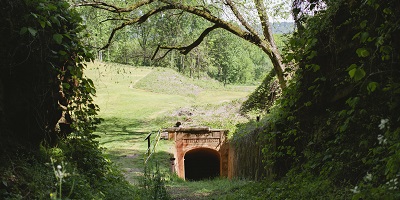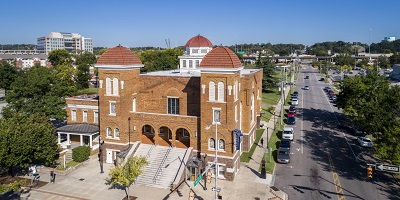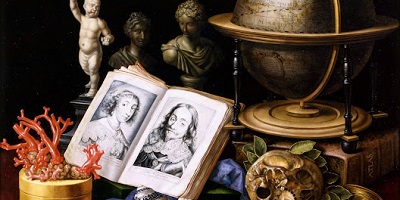Alabama Symphony Orchestra
From classical favorites to contemporary performances inspired by pop culture, the Alabama Symphony Orchestra (ASO) offers opportunities to relax and enjoy live music played in unison by talented ASO musicians. You can find the ASO performing in concert halls throughout Birmingham or at special events held under the stars in one of the city’s parks.
The Alabama Symphony Orchestra traces its origins to 52 volunteer musicians coming together to perform at the Birmingham Music Festival at the Old Jefferson Theater in 1921. Throughout the 1930s, concerts continued with enthusiastic public acceptance, including open-air concerts in Avondale Park on Sunday afternoons. American involvement in World War II put a temporary stop to the concerts but the community’s enthusiasm and desire for live music allowed the Civic Symphony Association to rebuild the orchestra after the war.
Today, the ASO looks to the future and the boundless opportunities it holds for expanding its programs and activities in new and exciting ways. Working together with city and state leaders, the ASO is moving ahead with a commitment to its ever-broadening mission of making professional, symphonic music available to every resident in the state and beyond.
Learn more about the Alabama Symphony Orchestra
Alabama Theatre
Each year, 150,000 visitors flock to the Alabama Theatre to attend more than 150 events, including live performances and films. The 2,020-seat venue is known for its architecture, boasting an iconic marquee sign and five-story auditorium.
Built in 1927 as an Alabama showcase for Paramount Films, the Alabama Theatre was primarily used as a movie palace for 55 years and is on the National Register of Historic Places. It was purchased by non-profit corporation Birmingham Landmarks, Inc. in 1987 and underwent a complete restoration in 1998.
A must-see for visitors to the Alabama Theatre is the Mighty Wurlitzer, a Wurlitzer Opus 1783 32-rank pipe organ originally used to accompany silent films and special events. It is one of 17 such instruments of the Publix 1 style commissioned by the Publix theater division of Paramount Studios for its theaters across the United States and is only one of three to survive in its original location. The organ is still in use today as part of performances, events and films.
Learn more about the Alabama Theatre
Lyric Theatre
Part of the Birmingham Downtown Retail and Theatre Historic District, the Lyric Theatre is a century-old venue that is a beacon of history, entertainment and culture in the heart of Birmingham. The theatre offers a wide stage and close audience — better suited for performing arts such as the symphony, ballet, opera and theater.
Built in 1914 for B.F. Keith’s Vaudeville circuit, the Lyric is one of few theatres still existing today that was specifically designed to maximize the acoustics and close seating needed for vaudeville shows. Major stars such as the Marx Brothers, Mae West, Sophie Tucker, Will Rogers and Milton Berle played the Lyric in 1927. Berle revisited the theater in 1993 and said it was “as fine a theater as any in New York.”
During the 1920s, it was the custom to attend shows at the Lyric Theatre on Monday nights — if you could get a reservation. In the summertime, air was fanned over two tons of ice a day to keep guests cool. Though seating was segregated, the Lyric was one of the first venues in the South where Black and white people could watch the same show at the same time for the same price.
The Lyric Theatre closed permanently in 1960 and Birmingham Landmarks, Inc. acquired the building in 1993 with a vision to restore its beauty. Upon completion of an $11.8 million restoration, the Lyric Theatre reopened in 2016 and is once again home to concerts, comedy, symphonies, operas, theater productions and community events.
Learn more about the Lyric Theatre
Virginia Samford Theatre
Virginia Samford Theatre is a Romanesque playhouse constructed in 1927 on 26th Street South at Caldwell Park.
Through The Great Depression and early days of World War II, the theater was known as The Little Theatre. It presented hundreds of first-rate performances and played a starring role in the cultural life of Birmingham, bringing together people from every part of the city and every walk of life as actors and patrons.
The theater underwent changes in name, ownership and operations over the years, but was eventually purchased by the Metropolitan Arts Council (MAC) in 1999 and renamed in honor of philanthropist Virginia Samford Donovan. MAC and a committee of local leaders launched a $3 million capital campaign to preserve the historic structure. The theater and arts center reopened in 2002 and was awarded the Preservation Award by the Birmingham Historical Society.
Today, the Virginia Samford Theatre is a favorite destination for plays, musicals and events. With this broad spectrum of uses available to everyone in the community, the Virginia Samford Theatre plays a major cultural role in Birmingham’s future and remains a hub of creative insight and diverse entertainment.
Learn more about Virginia Samford Theatre
Red Mountain Theatre
For nearly four decades, Red Mountain Theatre (RMT) has cultivated one of the finest arts education centers in the South. RMT’s mission is to create powerful theater experiences that enrich, educate and engage audiences — nourishing the human spirit, fostering valuable life skills and cultivating a deeper sense of community.
Red Mountain Theatre is a place for audience members to come escape and be entertained. In 2021, RMT debuted its 60,000-square-foot Arts Campus in Birmingham’s burgeoning Parkside District featuring a mainstage theater and a 133-seat black box theater. The venue itself serves as a culture center for the Birmingham community by intertwining performance and community issues.
Through rehearsal and execution of high-quality musical productions, young performers are trained in technique and craft, etiquette and professionalism. Working alongside the industry’s finest professional performers, RMT students give stellar performances each season that entertain, enrich and engage audiences.





 To exercise your privacy choices,
To exercise your privacy choices,